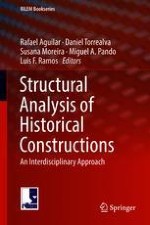2019 | OriginalPaper | Buchkapitel
Sacral Buildings in Slovenia – Seismic Risk Assessment Through Simplified Methodologies
verfasst von : Anton Štampfl, Vlatko Bosiljkov
Erschienen in: Structural Analysis of Historical Constructions
Verlag: Springer International Publishing
Aktivieren Sie unsere intelligente Suche, um passende Fachinhalte oder Patente zu finden.
Wählen Sie Textabschnitte aus um mit Künstlicher Intelligenz passenden Patente zu finden. powered by
Markieren Sie Textabschnitte, um KI-gestützt weitere passende Inhalte zu finden. powered by
